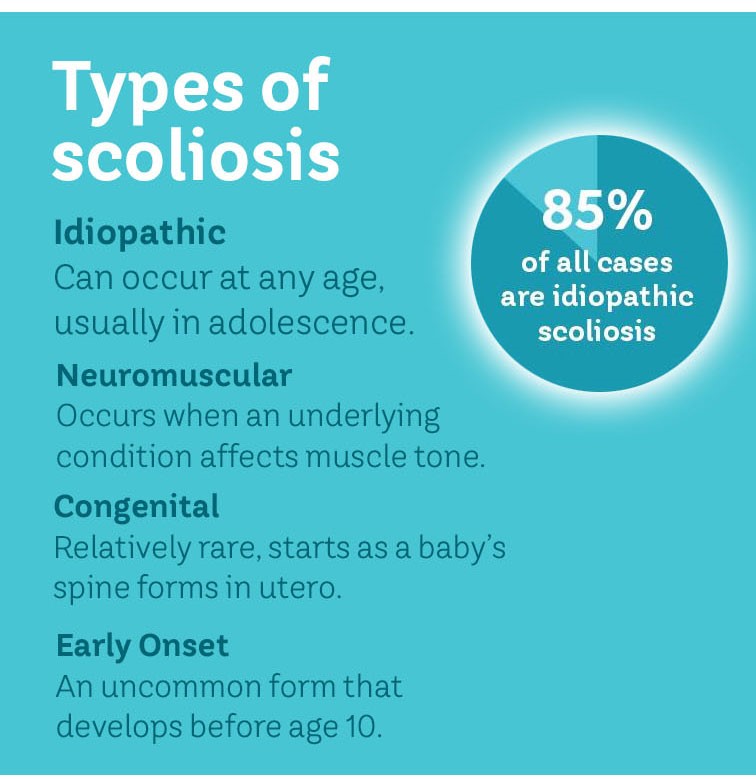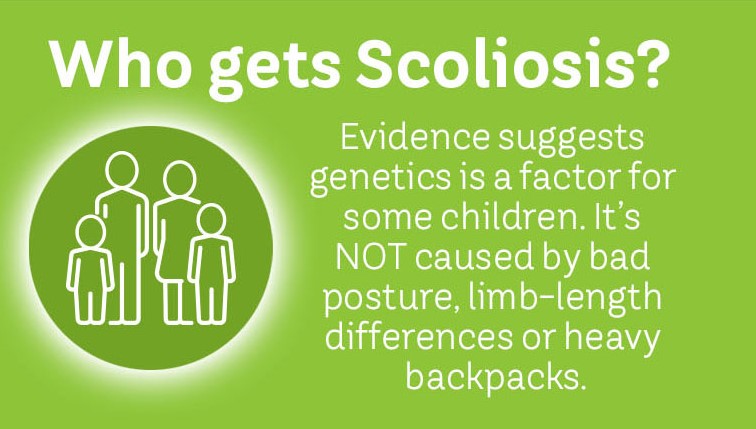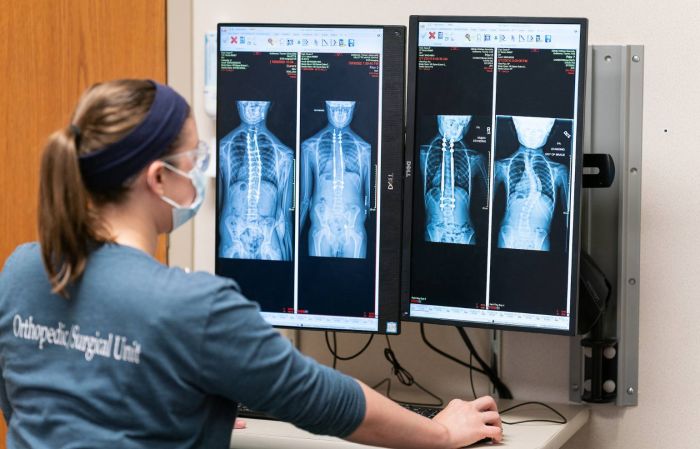Gillette Children's spine expert Danielle Harding, PA-C, breaks down five key things to know if you or a loved one has been diagnosed with scoliosis, which causes an abnormal curvature of the spine.
1. There is more than one type of scoliosis.
Scoliosis is a sideways curve of the spine that might be idiopathic (with an unknown cause), neuromuscular (caused by an underlying neuromuscular disorder), or congenital (present from birth due to the way the child developed in utero). Scoliosis is a common condition that can leave the spine looking like an “S” or a “C,” rather than a straight line down the back. Some curves in the spine are normal and help with balance and the ability to stand upright—it is a sideways curvature of the spine that indicates scoliosis.

Scoliosis might be idiopathic, neuromuscular, or congenital. It might also be described as "early onset," if it occurs before your child is 10 years old. 85% of all scoliosis cases are considered idiopathic, with no known cause.
2. You did not do anything to cause scoliosis.
The exact reason why your child's spine curved remains unknown. That’s what “idiopathic” means – that we don’t know why it occurs. We know there is some basis in genetics. A recent theory involves the front of the spine growing faster than the back of the spine, causing a rotating and twisting of the spine.
It is not from wearing a heavy backpack; it is not from a “wrong” sleep position; it is not from having poor posture. There was nothing you or your child could have done to prevent them getting scoliosis.

Evidence suggests that genetics is a factor for some children who get scoliosis. It is not caused by bad posture, limb length differences, or heavy backpacks.
3. Back pain is not a typical symptom of scoliosis.
Most people with scoliosis do not report pain; those that do report pain, typically report only mild pain. Severe or constant pain is not a typical symptom of scoliosis.
You or your parent may have noticed one or more of the following changes in your appearance:
- Chest shifted to one side
- One shoulder blade more noticeable than other
- Asymmetry (unevenness) of the waist
- Clothes fit unevenly
- One shoulder is higher than other
- One hip is higher than other
- Asymmetry of front torso
You may not have noticed any changes in your appearance, but your healthcare provider did when you had your check-up. Your provider may have asked you to do a forward bend exam, which can show spine abnormalities. This is called the Adam’s Forward Bend Test.
The diagnosis of scoliosis is made based upon physical exam, family history of scoliosis, and x-ray of the spine.
4. All spinal curves are different.
Most patients with mild scoliosis at skeletal maturity (when the spine is no longer growing) will lead a normal life with no limitations on activities, including sports.
However, for patients with more significant curves, there is a higher likelihood that the curve will continue to progress into adulthood. Although it will progress slowly, throughout a lifetime this can add up to a significant curve which can be more difficult to correct and have an impact on quality of life.
5. Gillette Children's is the best place for scoliosis diagnosis and treatment.
If your child has scoliosis, Gillette Children’s can help. Gillette is a nationally and internationally recognized leader in pediatric orthopedics and in the treatment of pediatric spine conditions, including scoliosis.
Whether your child has idiopathic, neuromuscular ,or congenital scoliosis, the primary goal of any treatment is to stop the curve from getting worse. Regardless of severity, scoliosis pain is rare. In many cases, surgery isn’t necessary if scoliosis is detected early and your child receives proper care.
Treatment of scoliosis varies depending on a patient’s age, the degree and pattern of spinal curvature, and the type of scoliosis.
Learn more about scoliosis diagnosis and treatment at Gillette.
Read patient stories and find more resources on our Scoliosis Awareness page.
 Home Page
Home Page

